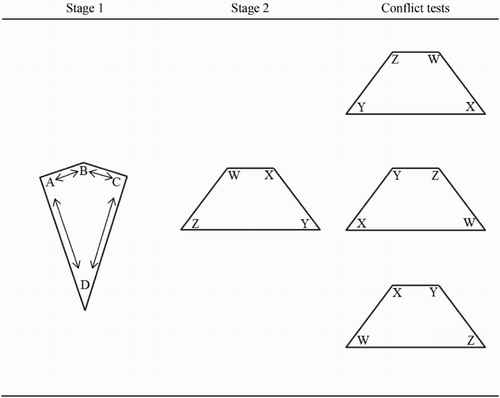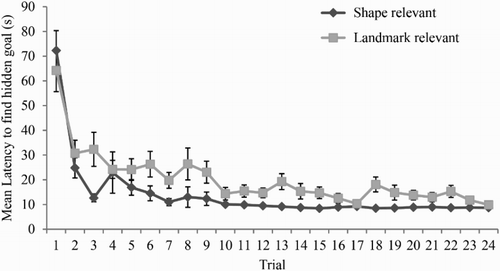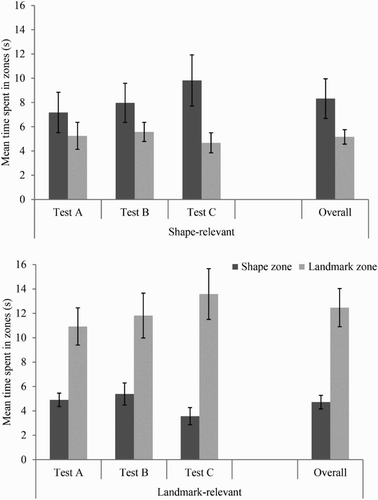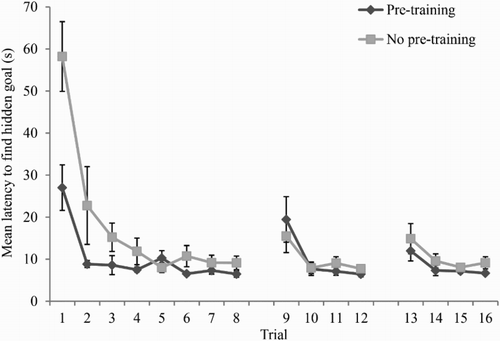Figures & data
Figure 1. Schematic diagrams of the arenas used in Experiment 1. A, B, C, and D represent the blue spheres that were present within the kite-shaped arena during Stage 1, and the arrows between then represent the fact that the landmarks moved between each of the 24 trials of Stage 1 training. For the landmark-relevant group, the hidden goal remained by a particular sphere, regardless of which corner that sphere was in. For the shape-relevant group, the hidden goal remained in the same corner of the kite, regardless of which sphere was in that corner. W, X, Y, and Z represent the red spheres that were present within the trapezium-shaped arena. The red spheres remained in a constant position during training, such that for every participant, both the corner of the trapezium and the landmark located at that corner signalled the goal location. Finally, during the three test trials, the configuration of red spheres was rotated to place shape and landmark information into conflict.

Figure 2. Mean latencies of the two groups to find the hidden goal in Stage 1 of Experiment 1. Error bars show 1 ± standard error of the mean.

Figure 3. Mean latencies of the two groups to find the hidden goal in Stage 2 of Experiment 1. Error bars show 1 ± standard error of the mean.

Figure 4. Mean time spent in zones for each of the three conflict tests of Experiment 1for the shape- and landmark-relevant groups. Error bars represent 1± standard error of the mean.



